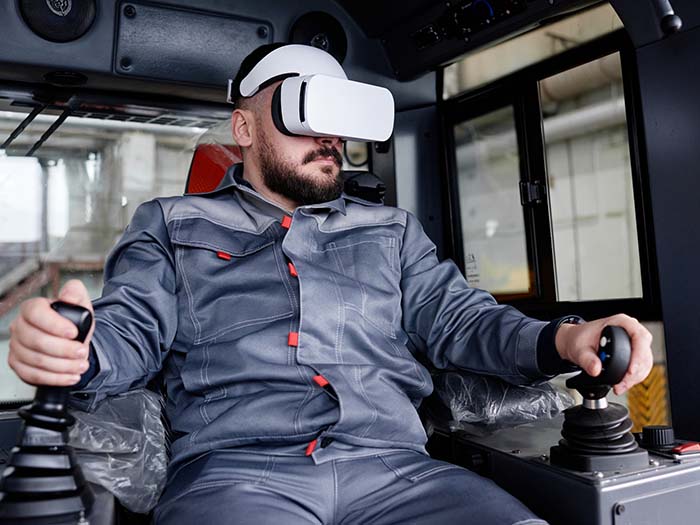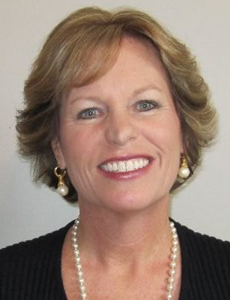At RISKWORLD 2023: Experts Say the Future of Workplace Safety Hinges Upon Partnerships and Proactive Use of Data

Susan Shemanski leads a team responsible for managing the safety of 70,000 workers across 6,000 U.S. job sites. Fatigue is perhaps the most pressing worker health issues on her mind, and one she emphasized at this year’s RISKWORLD in Atlanta during her session, “The Future of Workplace Safety: A Case Study.”
With many industries facing critical labor shortages, the employees who are showing up are working longer and often harder. Not to mention, those who experience fatigue as a symptom of long-COVID often struggle to keep up a steady work rhythm.
“People are fatigued and that leads to an increase in injuries,” Shemanski said. “One third of all injuries are due to the talent shortage and fatigue in the workplace right now.”
As the vice president of risk management for The Adecco Group, Shemanski has partnered with Marsh Advisory to deploy a variety of tools to help jobsites in its employer network to get ahead of common issues that can put new and temporary employees at risk of injury.
During the session, she and Shanna Levesque, SVP, Southeast practice leader at Marsh, shared key outcomes from Adecco’s recent 90-day pilot program with wearable technology that not only led to injury reductions but also yielded a surprising quality of life improvement for one worker.
Twenty industrial employees at a jobsite were outfitted with wearable devices to measure their bending, twisting and overall exertion. And within the first week, “we noticed one significant outlier — Ms. Ora,” Levesque recalled.
The data captured by the devices was used to produce a metabolic equivalent score, or ‘MET score,’ for each worker. And while nearly the entire cohort was bending and twisting more than the optimal safety range, Ms. Ora’s MET score was about 50% higher than her colleagues with the same job. The question was, why?
When looking at scoring data collected by wearables, it’s incumbent upon management teams, Shemanski said, to determine if it’s the way workers are performing their tasks or if the job itself might need to be modified.
“So, then we took that data, met with employees weekly, [and] asked for their input with the changes,” Shemanski shared.
Marsh also immediately arranged for an ergonomist to come in and help re-engineer some of the positions at the facility to ensure everyone in the cohort was equipped to work as safely as possible. In Ms. Ora’s case, a few simple changes to her workstation resolved the issue that was driving her fatigue.
The most gratifying part of this pilot program, Levesque said, was when 60 days from the onset, Ms. Ora shared how her life had changed. Although her fatigue hadn’t led to a workers’ comp claim, overexerting herself day after day for a year had diminished her quality of life. Once her workstation was updated, she regained enough energy to resume hobbies and family activities that she had given up due to her high level of fatigue.
Putting Data to Work
Traditional safety models could have uncovered the workstation issues found during the pilot, but those processes would have taken much longer, Levesque said. With wearables, “we were able to target the insights faster.”
And within a year, “we saw something we didn’t expect,” Shemanski said. The site had reduced its losses by 64%.
Building off this success, Adecco has continued to integrate wearable devices into how they equip employees to work at other sites in its network. But the devices themselves do not improve outcomes: “Implementation is critical,” Shemanski said.
Employees have to be willing to wear the devices.
“People asked if they were going to get paid for wearing the devices,” Shemanski shared. “[They] asked if we’re checking their blood pressure,” among other health conditions.
It’s important to explain the purpose of the device they’re being asked to wear, Levesque said. “If you’re wearing safety glasses already, that’s part of your requirement,” she shared as an example. “This is just another piece of protective equipment.”
While data on workers’ movements and whereabouts can be helpful in uncovering hidden hazards, Levesque reminded the audience that with the propensity of nuclear verdicts only increasing, it’s imperative for employers to remember that data is discoverable.
“You need to decide what to do with this data,” and in a timely fashion, she said, encouraging attendees to make constructive use of any information they collect from wearables or other devices right away, rather than collect data without a framework in place to analyze it.
Shemanski noted one of the many benefits she has found from partnering with Marsh Advisory to enhance Adecco’s safety program, rather than relying solely upon her internal risk team, has been the access to Marsh’s data navigator.
While identifying safety problems that need to be addressed first is key, “data can help you with your strategy,” Shemanski said, reflecting on the benefits of having access to robust data analysis capabilities via the navigator portal.
Upskilling to Improve Safety and Meet Market Needs
In addition to worker fatigue, Shemanski discussed how her team has worked to close the skill gaps that are also presenting major safety risks for employees.
Which means that more than just looking to fill jobs, Adecco has amplified its training and upskilling efforts to make sure workers have the skills they need for light industrial positions like forklift driving — the demand for which Shemanski has seen double since 2018.
By reaching out to members of their worker pool, whom she referred to as ‘good performers’ — meaning that they show up consistently, are positive to work with and perform tasks as they’re asked to — her team deployed a virtual reality program to train over 250 associates to be forklift drivers.
Shemanski’s team also sought to make sure women had the opportunity to build skills in this area as they are typically underrepresented among forklift drivers: “[This] gives them a career path that they wouldn’t have otherwise.”
And a pay increase too, Levesque added. People who may have previously worked in supermarkets or fast food, for example, tend to make $2 to $3 more per hour as forklift drivers. “Which is a lot of money for hourly-paid workers,” she said.
Shemanski and her team also chose to lean into the VR educational model for this upskilling program based on gamification research.
“Statistics show that there’s an 80% retention rate of the information that is learned when you’re using gamification [like VR] compared to only a 15% retention rate in a classroom,” Shemanski said.
Having tried the 3D ocular glasses, steering wheel and foot pedal herself a few times, Shemanski said, the VR training model is a fun way to learn: “When someone steps out in front of you, you feel like you’re really there.”
But virtual reality is not the only way to use games to help workers build new skills.
“We actually recruit from a mobile app for people who want to do a day, a couple of weeks, a month,” Shemanski said.
Shemanski noted labor forecasts have shown that by 2027, 50% of all workers will be gig workers, and this has required her team to embrace a shift in onboarding and communication around safety protocols.
“Everybody wants everything fast,” she said. “That’s why we’ve used technology. People are used to using their phones. We’ve seen a lot of success with that.”
Taking the Next Step to Improve Safety
Having reduced injuries by 64% over the past year by thoughtfully conducting pilot programs with wearable technology, upskilling with virtual reality and maximizing the recruiting and training capabilities of mobile apps, Shemanski’s team reported $68 million in savings on injury-associated losses over the past seven years.
Seeing such a clear return on investment, it’s no surprise that Adecco’s executive management team has encouraged Shemanski to look into other ways technology can be used to get ahead of safety issues.
From her side at Marsh, Levesque said the next phase of improving worker safety will entail looking at human errors caused by cognitive fatigue and divided attention, for example, “not just the behavior piece.”
Her team has also already begun to apply AI and machine learning to scan through claims and “see what’s really causing these injuries,” she said.
By mining through accident descriptions and adjusters’ notes, these tools are helping her team to drop pins in some of the costliest claims then go back to the management teams they support, dig deeper into the root causes of the issues and come up with solutions together.
When asked by a member of the audience how her team at Adecco found the ergonomist that helped Ms. Ora’s jobsite turn its less than optimal MET scores into a 64% loss reduction, Shemanski reiterated the value of her partnership with Marsh Advisory.
Although Adecco has a small internal safety team, finding an outside partner with the expertise and capacity to assess and anticipate the evolving safety needs of workers was a necessary move to keep pace with today’s job market.
“Find someone to partner with,” she said. “It’s hard to do it all yourself.” &











